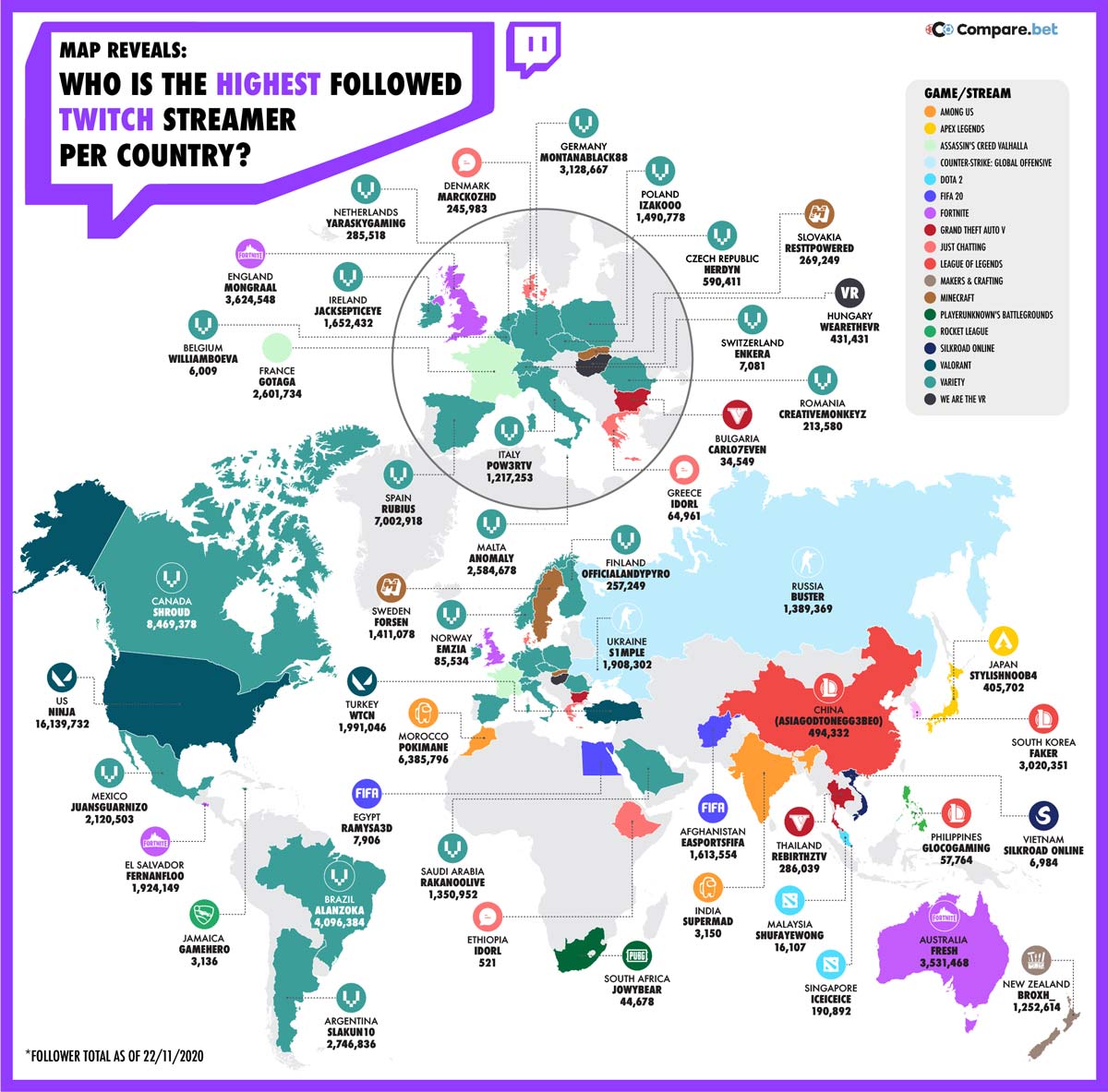Here are the top Twitch streamers per country and how much they earn per video

What is Twitch?
Twitch is the world’s leading live streaming platform for gamers and many other things, from ‘social eating’, which consists of watching streamers eat and drink, to simply watching someone play chess. On the platform, users can watch and chat with millions of other users from around the world.
Twitch also allows users to broadcast and watch pre-recorded videos. Typically, a Twitch broadcast includes audio commentary from the player, and a video of the player might also appear on the edge of the screen via their webcam.
Watching broadcasts and videos on Twitch is completely free and doesn’t require viewers to log in. Creating an account, however, does allow users to add their favourite channels to a follow list (similar to subscribing to a channel on YouTube) and participate in each stream’s specific chatroom.
Why is Twitch so popular?
Twitch has gained popularity mostly due to its live streaming feature as well as the rise in eSport interest. Today, millions of professional gamers stream their live game action, which in turn is spectated by millions of users. One of the factors to its success is that it focuses its broadcast services to video games mostly.
Who are the top Twitch streamers in each country?
With 15 million streamers currently around the world and an average growth of 18 per cent from 2018 to 2019, it is clear to see why Twitch is the number one live-streaming platform. This led Compare to analyse who the most successful Twitch streamers are in each country. Utilising TwitchMetrics as well as Influencer Marketing Hub’s Twitch Money Calculator, it was able to find out the most popular streamers in 50 countries and calculate how much they could potentially be earning through their streams.

Ninja, the US’ favourite streamer who specialises in VALORANT, Fortnite and Dead by Daylight, currently has the highest Twitch following at 16,139,732. Ninja’s average media value per video is also estimated at $79,815, so £59,821.
For England, Mongraal takes the number one spot with 3,624,548 followers and an average media value of $16,095 which equals £12,063 per video. Mongraal streams Fortnite and Call of Duty: Black Ops Cold War.
Rubius is the highest-followed Twitch streamer in Spain with 7,002,918 followers and an average media value of $12,843, so £9,625.
Mexican gamer Juansguarnizo potentially earns the most per stream at an estimated £255,697 despite the fact that he has only 2,120,503 followers, a small number compared to other top streamers.
Coming in second and third place for highest paid are Buster from Russia and Shroud from Canada with potential earnings of £249,429 and £219,488 respectively.
Among the lowest-paid top streamers are Alanzoka from Brazil with £2,250 per stream, Carlo7even with £942, JowyBear, one of the only women on the list, from South Africa with £911, Asiagodtonegg3be0 from China with £667, and GLOCOGaming from the Philippines with £53 per video.





